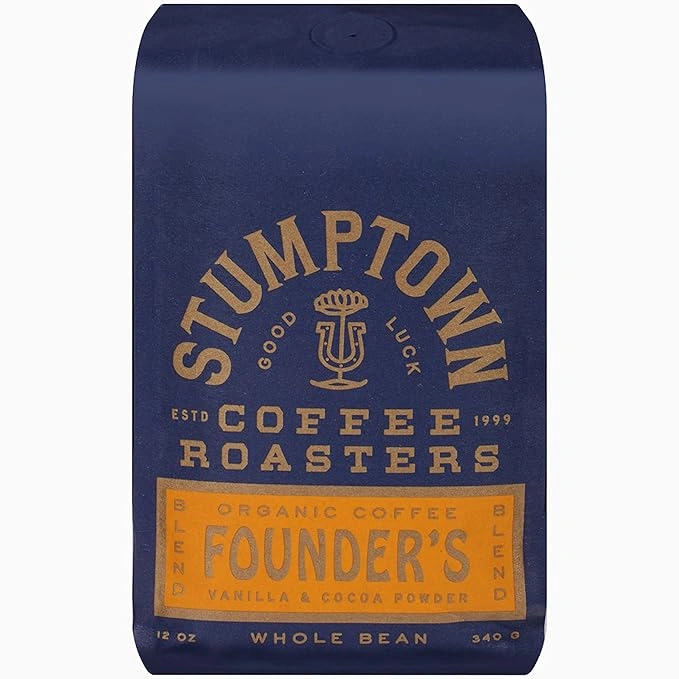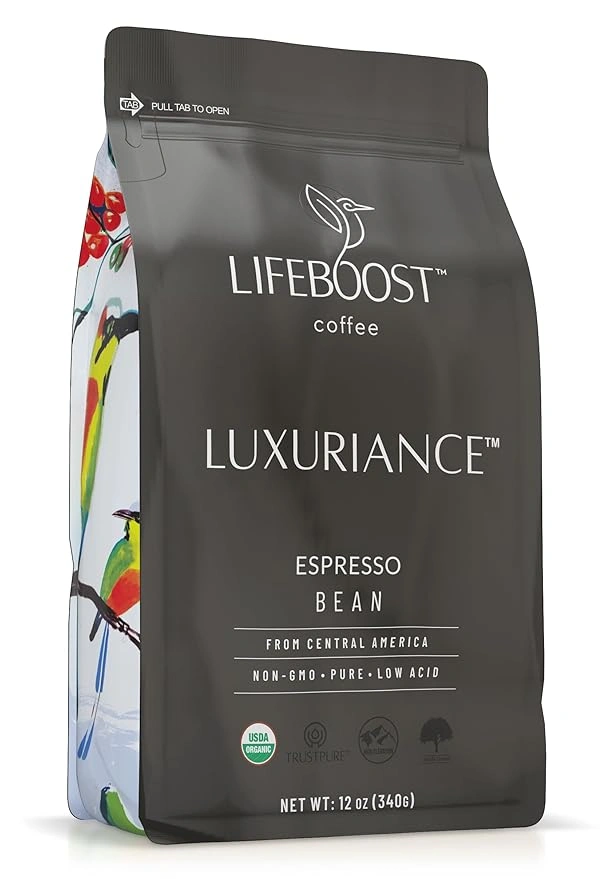Dark Roast Coffee vs Light Roast: The Ultimate Comparison Guide!

Even, if you sip your coffee casually or are a professional coffee enthusiast, have you ever had a debate in your mind: dark roast coffee vs light roast, which is best?
This question engages the conversations between people in cafes and kitchens around the world. Some people choose for strong, deep flavors of dark roast coffee, whereas others are very fond of having bright, fruity notes of light roast coffee. But which one has dominated the coffee industry? And what real differences can we find behind just taste?
In this guide, we’ll dive deep into:
● The science behind coffee roasting
● Flavor, body, and caffeine comparisons
● Myths about acidity and strength
● How to choose the best roast for your taste and brewing style
Let’s debate on the dark roast vs light roast once and for all.
Table of Contents
Introduction
At what level and how you are roasting coffee beans can closely affect your brew, from taste and texture to aroma and caffeine content. So, be careful because it’s one of the essential key points to know how your morning coffee will taste.
Nowadays, Specialty coffee is rising among coffee lovers and most of the people are curious and uncovering shade between dark roast coffee and light roast coffee. And your choices usually come after how it tastes. So, understanding the truth can help you:
● Choose better beans
● Brew a better cup
● Understand your caffeine intake
● Prevent common belief (like “darker = stronger”)
Hence, if you are picking coffee beans for your French press, espresso machine, or daily drip, knowing at what level you have to roast your coffee beans is the main focus to get a better brew.
What Is Coffee Roasting?
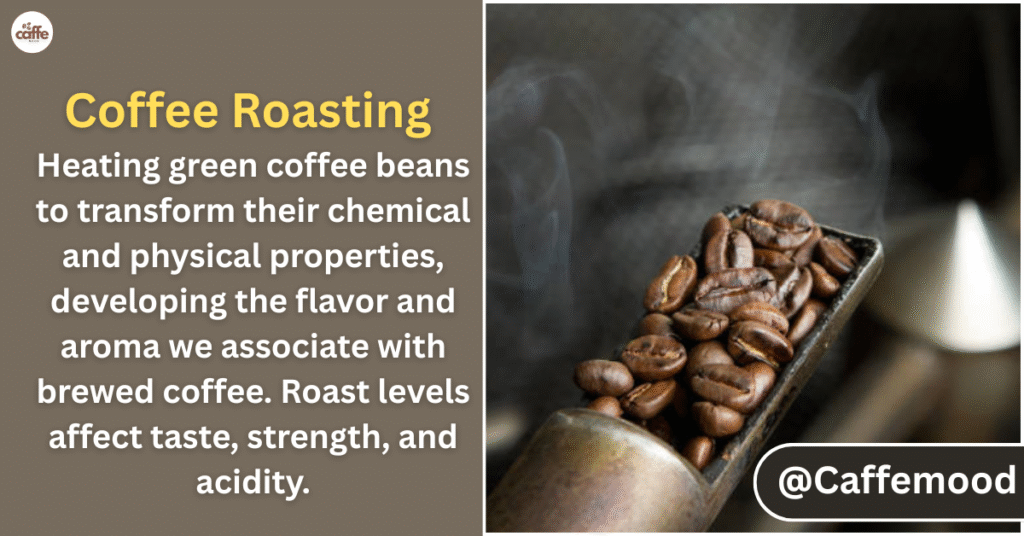
Before diving into comparing the two types of roast, it guides you to get knowledge about how coffee roasting works while brewing.
Let you know, that roasting is the technique of changing the green coffee beans into the aromatic brown beans we all are familiar with and love. It is completed by heating the green beans in high temperatures (generally 370°F to 530°F) with the help of a roasting machine.
The Roasting Stages:
1. Light Roast – Removed soon after the first “crack” (internal pressure release)
2. Medium Roast – A balance of origin flavor and roast character
3. Dark Roast – Roasted past the second “crack,” resulting in bold, smoky flavors
As beans roast:
● Their color darkens
● Oils rise to the surface (especially in dark roasts)
● Acidity decreases
● Flavor changes from fruity to roasted
Roasting is a mixture of both science and art. Making little change in temperature or time while roasting can have a major effect on the taste of the final product.
What Is Light Roast Coffee?
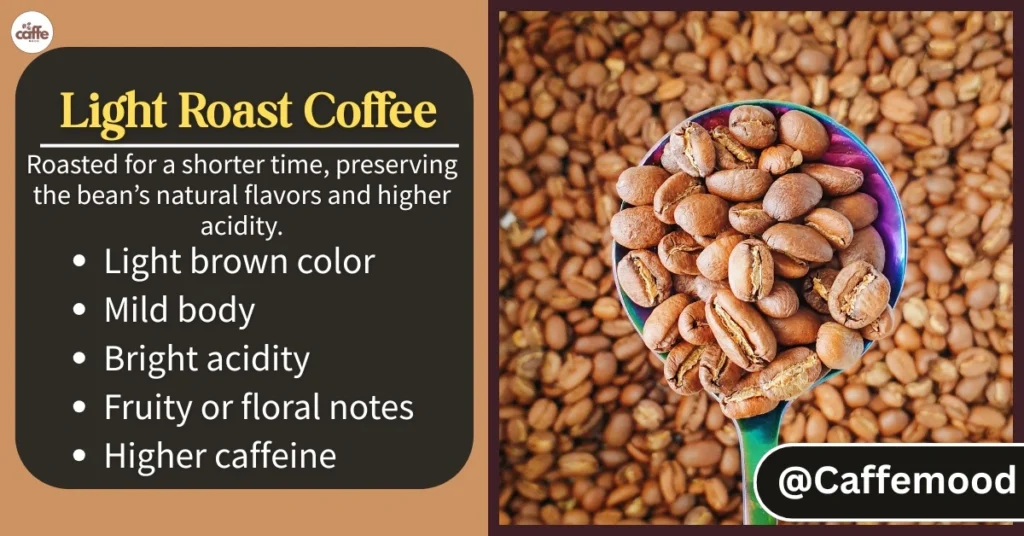
Light roast coffee is roasted at a low temperature for a short period of time compared to darker roasts. After the first “crack” happens, it is pulled from the roaster machine. The pressure inside the beans that is given by steam is the reason for it to split.
Characteristics of Light Roast Coffee:
● Color: Light brown
● Surface: Dry (no visible oils)
● Flavor Notes: Fruity, floral, lemony and herbal taste
● Body: Light to medium
● Acidity: High
● Caffeine (per scoop): Little bit higher than dark roast
Light Roast Coffee has the original flavor of the coffee beans. As a result, Light roast coffee beans from Ethiopia offer significantly different taste than with the one we found in coffee beans from Guatemala. If you prefer refined flavors and love tasting notes such as berry, tea, or lemon twist, Light roast coffee beans can be your best choice.
If you are exploring for the “Best Light Roast Coffee” than you are on the right place, Check Out this Article;
Best Light Roast Coffee Beans On the Market;
Best Brewing Methods for Light Roast:
● Cold brew (for a fruitier finish)
At 21st century coffee lovers, light roast is most popular, which gives importance in complexity and brightness in their everyday cup.
What Is Dark Roast Coffee?

Now going to the next coffee roasting, Dark Roast Coffee is roasted longer at higher temperature than light roast coffee. After the second ”crack” sound, when most of the beans’ wetness is roasted out and oil is seen on the top then the coffee beans should be taken off.
Characteristics of Dark Roast Coffee:
● Color: Dark brown to almost black
● Surface: Oily sheen
● Flavor Notes: Chocolate, smoky, toasted, nutty
● Body: Full-bodied
● Acidity: Low
● Caffeine (per scoop): Slightly less than light roast
As we all know, the roasting process plays the main step to make your cup flavor full. You can taste a few origin-specific notes of coffee beans. But other than that you can have a strong, consistent profile that gives you comfort and boldness.
Best Dark Roast Coffee Beans On the Market;
Best Brewing Methods for Dark Roast:
● Espresso
● Cold brew (for deeper, chocolatey notes)
Among the coffee lovers worldwide who prefer strong cups with simple looks, Dark roast is their first choice when you are having coffee in the morning or after having dinner.
I Personally Find this article will be your Perfect Buying Guide;
- “Top 10 Coffee Roasting Machines for Sale: The Best Premium Options to Boost Your Business in 2025!”
Dark Roast Coffee vs Light Roast: Key Differences
If we compare dark roast coffee vs light roast coffee, it comes more than just color. These two roast beans vary in taste, caffeine quantity, acidity, and also how they cooperate with your brewing process and body.
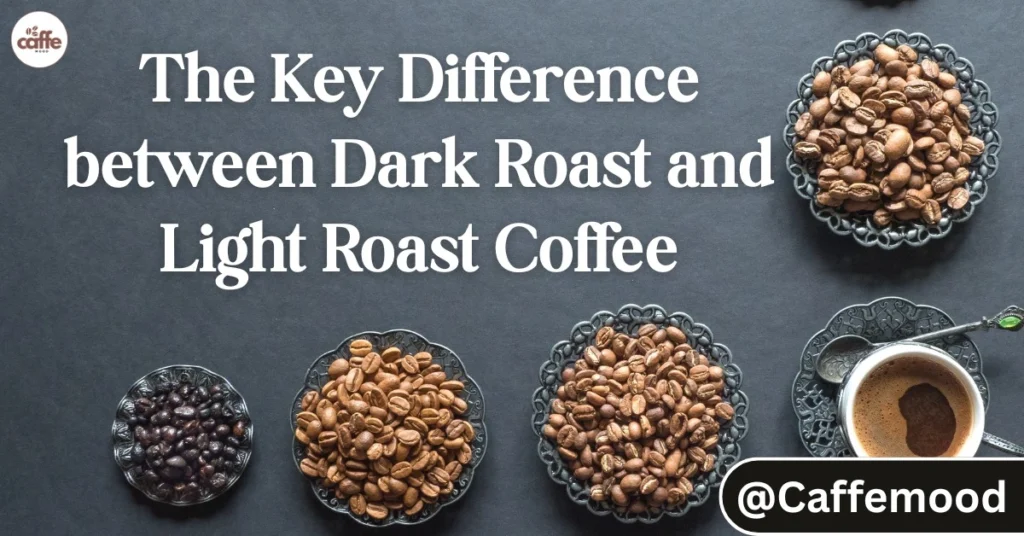
Let’s break down the main contrasts:
1. Flavor Profile
● Light Roast: Fruity, floral, bright, tea-like
● Dark Roast: Chocolatey, nutty, smoky, toasty
Light roasts display the sources of beans and regional identity. In Dark roast cases, it is all about the roasted flavor which is strong, bold and usually tastes bitter when it is excessively brewed.
2. Caffeine Content
- If you calculate as volume, you can see light roast coffee beans contain little bit more caffeine compared to dark roast
- But, if calculated by weight, dark roast coffee beans caffeine content is nearly equal because dark roast beans are less dense.
| Roast Type | Caffeine (per tablespoon) | Caffeine (per gram) |
| Light | Higher | Slightly lower |
| Dark | Slightly lower | Higher per gram |
Shortly, dark roast give strong, bold taste, but usually doesn’t contain more caffeine
3. Acidity
● Light Roast: High acidity (bright, crisp taste)
● Dark Roast: Low acidity (mellower, easier on the stomach)
Dark roast can be digested easily, so it’s good for people who are acid sensitive.
4. Body and Mouthfeel
● Light Roast: Light to medium body
● Dark Roast: Bold, heavy, residual
Dark roasts give a rich, velvety mouthfeel, whereas light roasts give a smooth feel and cleaner appetite.
5. Appearance
● Light Roast: Dry beans, tan to light brown
● Dark Roast: Oily beans, deep brown to black
The glossy surface on dark roast beans retain from oils released during extended roasting
While roasting dark roast beans, shiny surfaces can be seen in its oil released from the beans.
6. Aroma
● Light Roast: Lemony, fruity, floral, tea-like
● Dark Roast: Brown, cocoa, caramelized sugar, dark
The light roast gives you a smell like refined and fresh, in other cases dark roast gives the smell of robusto and intense.
7. Brewing Compatibility
| Brew Method | Best Roast Type |
| Pour-Over | Light Roast |
| Espresso | Dark Roast |
| French Press | Dark Roast |
| AeroPress | Both |
| Drip | Both (depends on taste) |
Each roast type has their own benefit and shines differently counting on how you brew.
Which Roast Is Better for You?
Each roast type has its own better side in their own way. That’s why it is mostly relies on your personal preferences, how you are brewing, and wellness goals.
✅ Choose Light Roast If You:
● Enjoy fruity, complex flavors
● Prefer tea-like clarity in your coffee
● Use pour-over or manual brewing methods
● Want slightly more caffeine per scoop
● Are exploring specialty or single-origin coffees
✅ Choose Dark Roast If You:
● Like bold, smoky, or chocolatey flavors
● Prefer espresso, French press, or cold brew
● Have a sensitive stomach (lower acidity)
● Want a consistent, less acidic cup every time
● Love your coffee strong and full-bodied
If you are confused then try both. First start with a light roast for morning clarity and later change it into dark roast in the afternoon for a comforting and bold cup.
Health Benefits: Dark roast coffee vs Light roast coffee
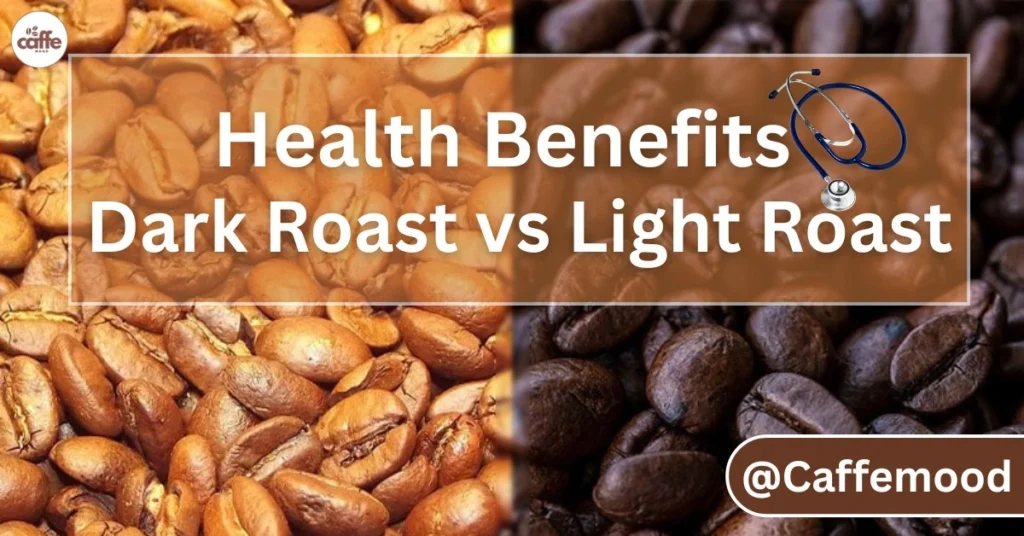
Let’s go to health benefits, both dark and light roast coffee contain their own benefits in the health sector and neither of the two is “better” or “worse” from a wellness standpoint.
1. Antioxidants
- If we look through light roast coffee, it contains more chlorogenic acid and antioxidants which give aids to swelling and also boost digestion.
2. Acidity and Stomach Health
- Dark roast coffee contain low in acidity levels which is easier for digestive system
- For some people, it may help to reduce discomfort in stomach and heartburn.
3. Mental Focus and Alertness
- To improve mental focus, mood and alertness, both roasts gives similar caffeine level (especially if calculated in weight)
4. Blood Sugar and Brain Health
- Few researchers recommend the dark roast for lowering blood sugar.
- Light roast has been connected to higher levels of neuroprotective elements.
Coming to the end, we can tell that the best roast is the one that makes you feel good, compatible with your lifestyle, and helps you in the health sector.
Common Myths About Dark Roast Coffee vs Light Roast Coffee
There is a lot of information out there which makes you confused about dark roast coffee vs light roast. Let’s break some of the famous myths.
Myth 1: Dark Roast Has More Caffeine
✅ Fact: Truthfully light roast contain slightly more caffeine per scoop because its heavy. You taste dark roast stronger. But even though it tastes strong and bold that cannot be said it’s more caffeinated.
Myth 2: Light Roast Is Always Better Quality
✅ Fact: For better quality, origin of bean, its processing method and freshness matter than its roast level. We can find both high-quality dark roasts and low-quality light roasts.
Myth 3: Dark Roast Tastes Burnt
✅ Fact: A dark roast which is executed properly gives bold flavor in your cup, not burnt bitterness. If you get burnt flavor in your cup then you have a problem in roasting or you have over-extraction during brewing your beans.
Myth 4: Light Roast Is Too Acidic
✅ Fact: Because light roast have higher acidity content, proper brewing can make your final cup with vibrant flavor without harness and most of the coffee drinkers like to drink the cup with bright finish.
Myth 5: You Can Only Brew Espresso With Dark Roast
✅ Fact: if you want to make espresso, any roast can be used even light. It all depends on the flavor you want to have and the grind size you are using.
Dark Roast Coffee vs Light Roast Coffee: Comparison Table
| Feature | Dark Roast Coffee | Light Roast Coffee |
| Roast Level | Roasted longer and at higher temperatures | Roasted shorter and at lower temperatures |
| Color | Dark brown to almost black | Light brown |
| Surface Texture | Oily sheen on beans | Dry, non-oily surface |
| Flavor Profile | Bold, smoky, chocolatey, nutty, toasty | Fruity, floral, citrusy, bright |
| Body (Mouthfeel) | Full-bodied, heavy, rich | Light to medium-bodied, clean |
| Acidity | Low acidity (easier on stomach) | Higher acidity (brighter taste) |
| Caffeine Content (by scoop) | Slightly lower (less dense beans) | Slightly higher (more dense beans) |
| Caffeine Content (by weight) | Nearly equal | Nearly equal |
| Aroma | Earthy, toasted, intense | Sweet, herbal, vibrant |
| Best Brewing Methods | French press, espresso, drip, cold brew | Pour-over, AeroPress, cold brew |
| Origin Flavor | Mostly masked by roast flavor | Preserved and highlighted |
| Shelf Life | Slightly longer (oils can protect freshness) | Shorter (oxidizes faster due to lighter roast) |
| Popular With | Traditional coffee drinkers, espresso fans | Specialty coffee lovers, third-wave enthusiasts |
| Ideal For | Strong, comforting brews; low acid diets | Complex, nuanced cups; flavor exploration |
Conclusion
Looking for bold, comforting brews; coffee lovers who are on low acid diets, nuances cups, taste experimentation, selecting between dark roast coffee and light roast fall down to one thing which is your personal taste. Both roasts have their own special flavor, strengths, and uses.
- If you prefer having bold, smoky and flavorful coffee which acidity level in low, than go for dark roast
- If you like bright, fruity notes and more nuanced cup than you should try light roast
Both beans boost your caffeine and have health benefits. So many brewing methods are available and beans to dive, you don’t have to worry while choosing only one. You can use both beans and do experiments and enjoy both!
Always keep in mind : the “best” coffee is the one that you prefer.
Remember: the “best” coffee is the one that tastes the best to you.
Top Articles For you to Check Out;
- Best Home Coffee Roaster Machine: Avoid Costly Mistakes and Roast with Confidence
- “Unlock the Secrets For Coffee Espresso: How Origin, Roast & Processing Impact Flavor – A Complete Guide”
- Which Is Stronger: Latte, Cappuccino, or Flat White?
- Does Ground Coffee Go Bad? Everything You Need to Know!
🎉 Love Coffee Chats? Join Caffemood!
“If you geek out over latte art, espresso ratios, or café startup stories, you’ll fit right in! Our Caffemood community is where coffee lovers and pros share:
🔥 Behind-the-scenes industry tips
📈 Exclusive Q&As with café owners
💬 First dibs on my new ebooks & courses
Frequently Asked Questions (FAQs)
Which has more caffeine: dark roast or light roast?
As we know light roast coffee is thick,so it has slightly more caffeine per scoop than the dark. But, if you calculate the weight, there is not much difference.
Is light roast more acidic than dark roast?
Yes, light roast has a higher acid content that presents a brighter and fruiter taste. Dark roast acidity level is low and frequently suggested by those with sensitive stomachs.
Can I brew espresso with a light roast?
Absolutely! Light roast espresso is well-known among the specialty coffee gathering due to its complexity and brightness.
Is dark roast more bitter than light roast?
Not always. But bitterness mostly relies on how the coffee is roasted and brewed. Dark bean which is roasted properly can present rich and smooth in your final cup without tasting bitter,
What roast level is best for beginners?
Beginning from Medium to dark roast is a good start because it is approachable and provides equal flavor, if you are just a beginner.


